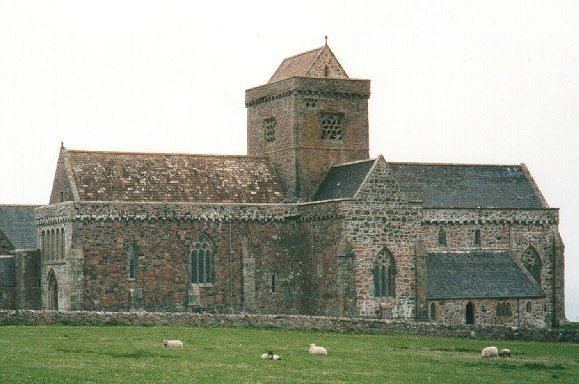Occupation Architect Name Ian Lindsay | Role Architect | |
 | ||
Born July 29, 1906 ( 1906-07-29 ) Edinburgh, Scotland Died August 28, 1966, Dechmont, United Kingdom Books Georgian Edinburgh, Inveraray and the Dukes of Argyll Education | ||
Ian Gordon Lindsay (29 July 1906 – 28 August 1966) was a Scottish architect. He was most noted for his numerous restoration projects, sometimes of whole villages but curiously was also involved in the design of several hydro-electric power stations.
Contents
Early life
Lindsay was born in Edinburgh in 1906, son of George Herbert Lindsay, distiller and baillie (town councillor), and Helen Eliza Turnbull. He was educated at Marlborough College and Trinity College, Cambridge. Here he began a lifetime friendship with John Betjeman.
Like many artistically-minded Cambridge undergraduates of his generation, Lindsay came under the spell of "Manny": Mansfield Duval Forbes. In his circle, Lindsay made a number of friends who were to have considerable influence on his later work; amongst these were Raymond McGrath, Oliver Hill, Robert Hurd, Thomas Steuart Fothringham and Robert Simpson.
Architect
After leaving Cambridge he was apprenticed to Reginald Fairlie in 1927, in 1931 he commenced practice on his own account before joining the firm of Orphoot and Whiting in 1933. In 1932 Lindsay had married the Hon Maysie Elizabeth Loch, daughter of Major General the 2nd Baron Loch of Drylaw and Stoke College.
During the 1930s Lindsay quickly developed a wide circle of personal and professional friends, many of whom were later to provide work for his architectural practice. Amongst these were the 4th Marquess of Bute, and his nephew Maj Michael Crichton Stuart, Dr Francis Carolus Eeles (secretary of the Council for the Care of Churches), J S Richardson (principal inspector of Ancient Monuments) and Peter F. Anson the writer and historian. The Dictionary of Scottish Architects states that Lindsay's circle of influential contacts was further widened when his sister, Ailsa Margaret Lindsay, married Lt. Col. Charles Findlay DSO, younger son of architect Lt Col James Leslie Findlay and grandson of John Ritchie Findlay of The Scotsman. The connection to the Marquess of Bute (and his links to the National Trust for Scotland) led Lindsay to be commissioned in 1936 to draw up lists of important buildings in 103 Scottish towns and villages, based on an Amsterdam model of three categories (A,B and C). Lindsay continued this work for many years, although interrupted by the outbreak of war, and this produced the basic list upon which statutory protection for listed buildings was later introduced in 1947, following expansion to cover all areas.
As Orphoot, Whiting and Lindsay the firm began major projects of restoration and renovation in the late 1930s at Iona Abbey, and the Canongate Kirk in Edinburgh.
During the war Lindsay served in the Royal Engineers. By 1945, in the rank of Major, he was serving with the British Army of the Rhine repairing war damaged buildings and constructing refugee accommodation.
After the war Lindsay returned to architecture, gaining Fellowship of the RIBA in 1949.
In the early 1952 the practice became Ian G Lindsay and Partners, and began the reconstruction of many small houses in the historic burgh of Culross in Fife, on behalf of the National Trust for Scotland. Similar projects for the Trust followed, across Scotland.
In the late 1950s and early 1960s Ian Lindsay undertook a major project involving the renovation of more than one hundred buildings in Inveraray, in Argyll, which had been previously gifted to the nation by the Duke of Argyll. Another major restoration, that of Pluscarden Abbey in Moray began at this time and was completed after Lindsay's death by William Murray Jack (1921–1999).
Ian Lindsay died of Hodgkin's Disease in Bangour Hospital in 1966. At his express wish his ashes were scattered from a boat into the waters of Iona Sound. The practice continued his work into the 1970s.
Legacy
Many of Ian Lindsay's drawings and other papers are preserved by the Royal Commission on the Ancient and Historical Monuments of Scotland in the Ian G Lindsay Collection.
In 1980 Dr Ronald Cant established and endowed the Lindsay-Fischer lectureship, administered by The Society of Antiquaries of Scotland, in honour of Ian Lindsay and Gerhard Fischer (1890-1977). The lectureship commemorates the men's work on the historic architecture of Scotland and Norway respectively and their achievements in promoting relations between Scottish and Norwegian scholars. The Lindsay-Fischer Lecture is given in Scotland by a Scandinavian scholar and the Fischer-Lindsay Lecture is given in Oslo by a Scottish scholar, in alternate years.
